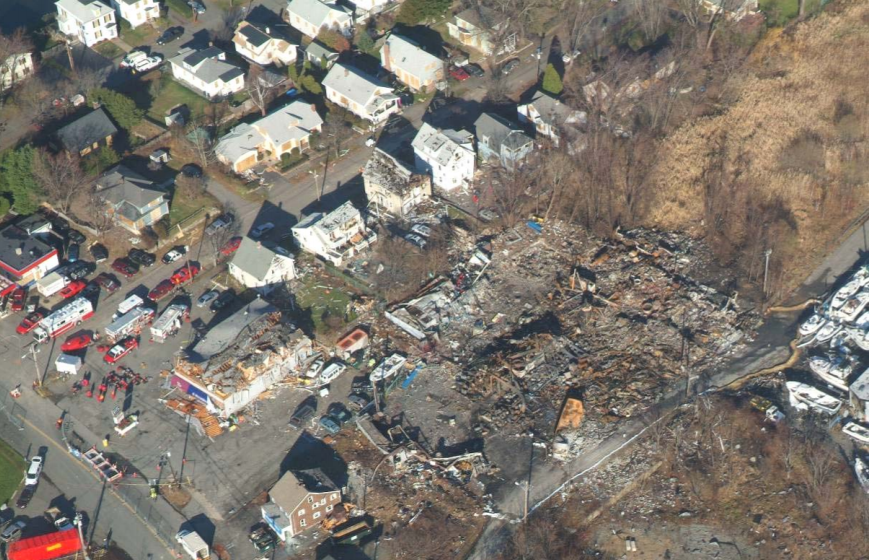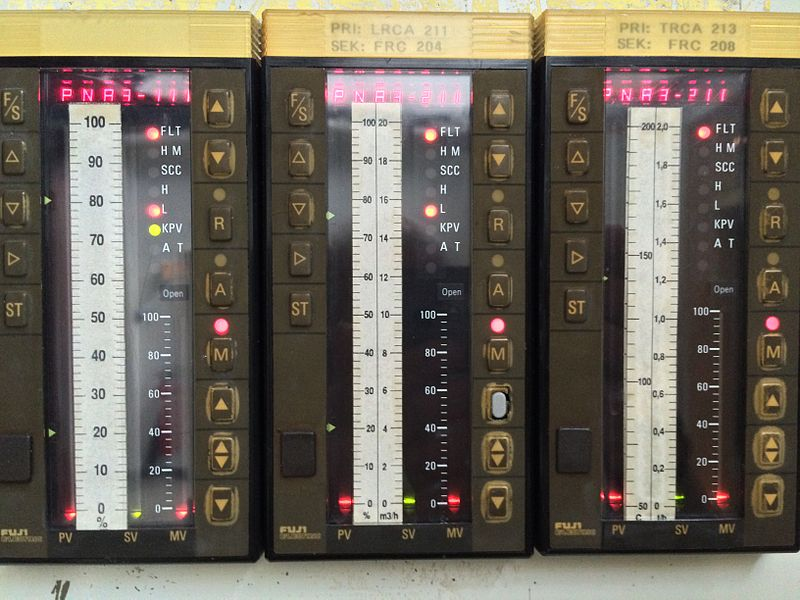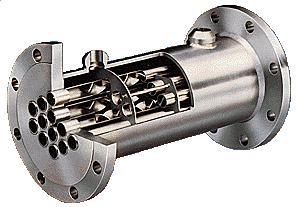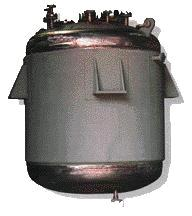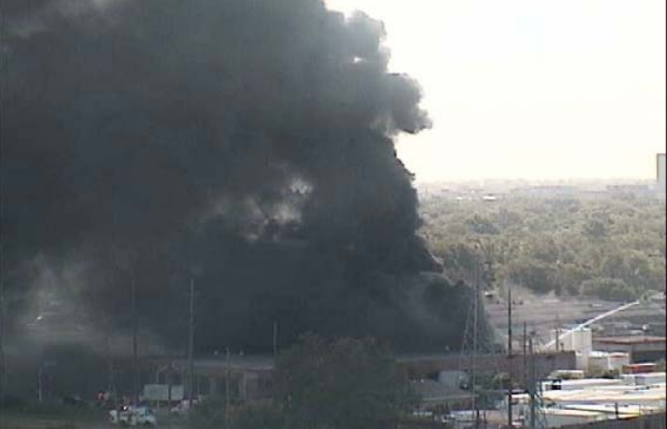Temperature control is very important to the application of process safety since it can prevent runaway reactions, fires and explosions, and equipment failure. Process temperature is often monitored by temperature control systems that are in place to achieve and maintain a setpoint temperature. These control systems are made up of several components that send and receive signals to one another to adjust the system temperature. When control systems cannot keep process temperature within safe limits, Safety Instrumented Systems (SIS) are used as shown in Process Safety Fundamentals. The control system functions through sensor transmitters that record the process temperature and send a signal to a controller that reflects the error between the measured and setpoint temperatures. The controller then adjusts the control element to manipulate a key variable that affects the temperature of the system.
To create a safe process, it is essential to monitor the temperature of the process. Depending on whether the process is heated or cooled, a measurement and control system is put in place to keep the temperature in an operatable range so that equipment and employees are not hurt or damaged. Temperature control may look different based on the process, but each temperature control system is responsible for maintaining proper temperature ranges to ensure the process and product are at specification. A change in temperature could influence not only the equipment but thermodynamic properties within the process. This can lead to the degradation of the final product.
Overtemperature Risk Factors
As can be seen in the case studies above, maintaining the process temperature within an allowable range is very important to avoid damage to process equipment and harm to employees. The mechanism for temperature control varies depending on whether the process is heated or cooled, and the repercussions of failed temperature control can range from a loss of product to explosions. Risk factors include runaway reactions, excessive heat input, inadequate cooling, and equipment failure. A misunderstanding of the reaction chemistry, non-attentive operators, and a broken coolant valve are all examples that could lead to an increase in system temperature. With proper temperature control, safeguards are in place to counteract any unexpected temperature changes.
Temperature Control Equipment
Sensor-Transmitters
Sensor-transmitters measure system properties and send signals to the controller. The most common form of the temperature sensor is a thermocouple, seen below. Thermocouples work by measuring the voltage between two dissimilar wires which are exposed to the process stream. Due to the thermoelectric effect, the voltage in the wires changes with changing temperature, so the voltage can be used to determine the temperature of the process. Thermocouples are generally housed in thermowells, which are metal housing welded to the inside of process equipment.
Other common temperature sensors include filled systems, resistance temperature detectors (RTDs), and pyrometers. To learn more about thermocouples as well as these other forms of temperature measurement, visit the temperature measurement module.
Controllers
The controller compares the signal sent by the sensor transmitter to a setpoint temperature and then sends a signal to the final control element to lower or raise the system temperature. Within the controller, the signal received from the transmitter is converted from analog to digital for the computer to perform calculations, then back to analog when the control signal is being sent. There are many types of controllers, including on/off, proportional, proportional-integral (PI), and proportional-integral-derivative (PID). Temperature control loops typically use PID controllers, such as the one shown below, which analyze the rate at which a system is moving away from the setpoint pressure to act more quickly than other types of controllers. For more information about controllers, see the process controls article.
Control Elements
The control element in a feedback control loop alters a mechanical variable to shift the system temperature back to the setpoint temperature. The most common control element used is a control valve that restricts or permits the flow of process fluid to control equipment such as reactor jackets and heat exchangers. While valves are the most common control element, electric heaters applied directly to a piece of process equipment can also be used.
Heat Exchangers
Heat exchangers function by running hot and cold process fluids in co-current or countercurrent piping to heat or cool one of the process fluids via conduction. Shell and tube heat exchangers such as the one below are the most common, and they function by sending a hot fluid through numerous tubes that pass within a shell containing a countercurrent coolant. The numerous tubes result in a large surface area over which heat transfer can occur, resulting in faster cooling of the process fluid. Note that the two fluids don’t come in contact with each other, as one is inside the tubes, and the other within the shell outside the tubes.
Reactor Jackets
Temperature control in a reactor is important to avoid a runaway reaction and obtain the desired yield. Chemical batch reactors can have a jacket that heat transfer fluid flows through to heat or cool the reaction occurring in the internal tank. The process fluid will often flow into the jacket through multiple points to maintain a more uniform system temperature. Types of reactor jackets include one-piece jackets, shown below, half-coil jackets, and constant flux jackets. Half-coil jackets offer faster and more effective cooling than one-piece jackets because the distribution of the heat transfer fluid is increased by the use of multiple piping elements. Constant flux jackets offer very accurate control of reactor temperature through the use of multiple jacket elements that can be controlled independently. More information on temperature control via these reactor jackets can be found on the batch reactor page.
Safety Instrumented Systems
Safety instrumented systems (SIS) provide additional protection if a control loop were to fail. While SISs contain essentially the same components as a feedback control loop, they do not continuously adjust system parameters. An SIS only alters its control element when the controller determines that the process temperature is beyond safe operating conditions. The SIS will then activate its control element to provide relief to the system by stopping the flow of a heating fluid or initiating the flow of a coolant. It operates independently from the feedback control loop to avoid potential interference.
Case Studies
Case Study 1 : 2006 CAI/Arnel Manufacturing Facility Vapor Cloud Explosion
In 2006, an explosion at the CAI and Arnel manufacturing facility in Danvers, MA damaged 24 homes and six businesses beyond repair and sent 10 residents to the hospital. The facility was destroyed and the resulting fire burned for 17 hours. This incident was the result of the ignition of a flammable vapor cloud that formed as a result of an overheated ink vehicle mixing tank. The 3,000-gallon tank was heated by an operator-controlled steam pipe connected to the tank jacket. On the day of the explosion, the production manager left the facility without turning off the steam valve once the tank reached the desired temperature. The consistent heating of the tank overnight, which contained chemicals such as heptane, isopropyl alcohol, and propyl alcohol, led to the vaporization of the mixture. The hatch on the tank designed to keep debris from entering the mixture did not prevent air or vapor from passing through it, and the ventilation in the building was turned off at night to prevent heat loss and noise pollution. These circumstances led to the facility filling with flammable vapor until the point of ignition from an unknown source. This incident was ultimately a result of human error that may have been prevented by a temperature control system. A temperature control system would have maintained the setpoint temperature without the need for an operator to turn off the steam valve.
Case Study 2: 2006 Universal Form Clamp Inc. Vapor Cloud Explosion
In 2006, an explosion that resulted from the ignition of a vapor cloud at Universal Form Clamp Inc. in Bellwood, IL killed one person and injured two.
An operator was mixing the flammable combination of heptane and mineral spirits in an open-top tank when he noticed a dense fog accumulating on the floor near the tank. The tank was heated using steam valves, and this resulted in the formation of flammable vapor that filled the room. Unlike the CAI/Arnel manufacturing explosion, this tank had temperature control equipment and a ventilation system in place. It was determined after the incident that temperature control elements did not function properly. The thermowell was designed to contain a thermally conductive fluid that it did not have and it was not properly assembled. This likely led to an incorrect or delayed temperature reading that led to the tank overheating. The local ventilation system that was in place was broken at the time of the incident and the building ventilation system was on the ceiling, so it was too far from the tank to aid in the removal of the vapor. This incident highlights the importance of proper installation and maintenance of control equipment. If the control equipment and local ventilation systems had been maintained, the system likely would not have overheated and the ventilation would have helped remove the undesired vapor.
For more case studies, please visit the CSB case studies webpage and the SAFEChE website.
Acknowledgments
- Central Fabricators, Cincinnati, OH
- Chemineer, Inc., North Andover, MA
- Flowserve Corporation, Irving, TX
- Chemical Engineering Department, University of Michigan, Ann Arbor, MI
- Wikimedia Commons
References
- Cross, James, personal communication, 2016.
- Crowl, Daniel A., Louvar, Joseph F. Chemical Process Safety: Fundamentals with Applications New Jersey: Prentice-Hall P T R, 1990. Print.
- Doyle III, Francis J., Edgar, Thomas F., Mellichamp, Duncan A., and Seborg, Dale E. Process Dynamics and Control. 3rd ed. New York: John Wiley & Sons, 2011. Print.
- Fogler, Scott H. Essentials of Chemical Reaction Engineering. Westford, MA: Prentice-Hall, 2011. Print.
- Luyben, Michael L., and William L. Luyben. Essentials of Process Control. McGraw-Hill, 1997.
- Leigh, J. R. Temperature measurement and control. London: Peter Peregrinus Ltd, 1991.
- McGuire, Chad, et al. “Selecting Sensors for Safety Instrumented Systems.” CEP Magazine, American Institute of Chemical Engineers, July 2015.
- “Orb Jacketed Reactor.” Syrris, Syrris Ltd., 2019
- Wikimedia Commons, Bitjungle
Developers
- Eric Giuffrida
- Michael Andrews
- Fritz Hyde
- Alex White
- Austin Potter

